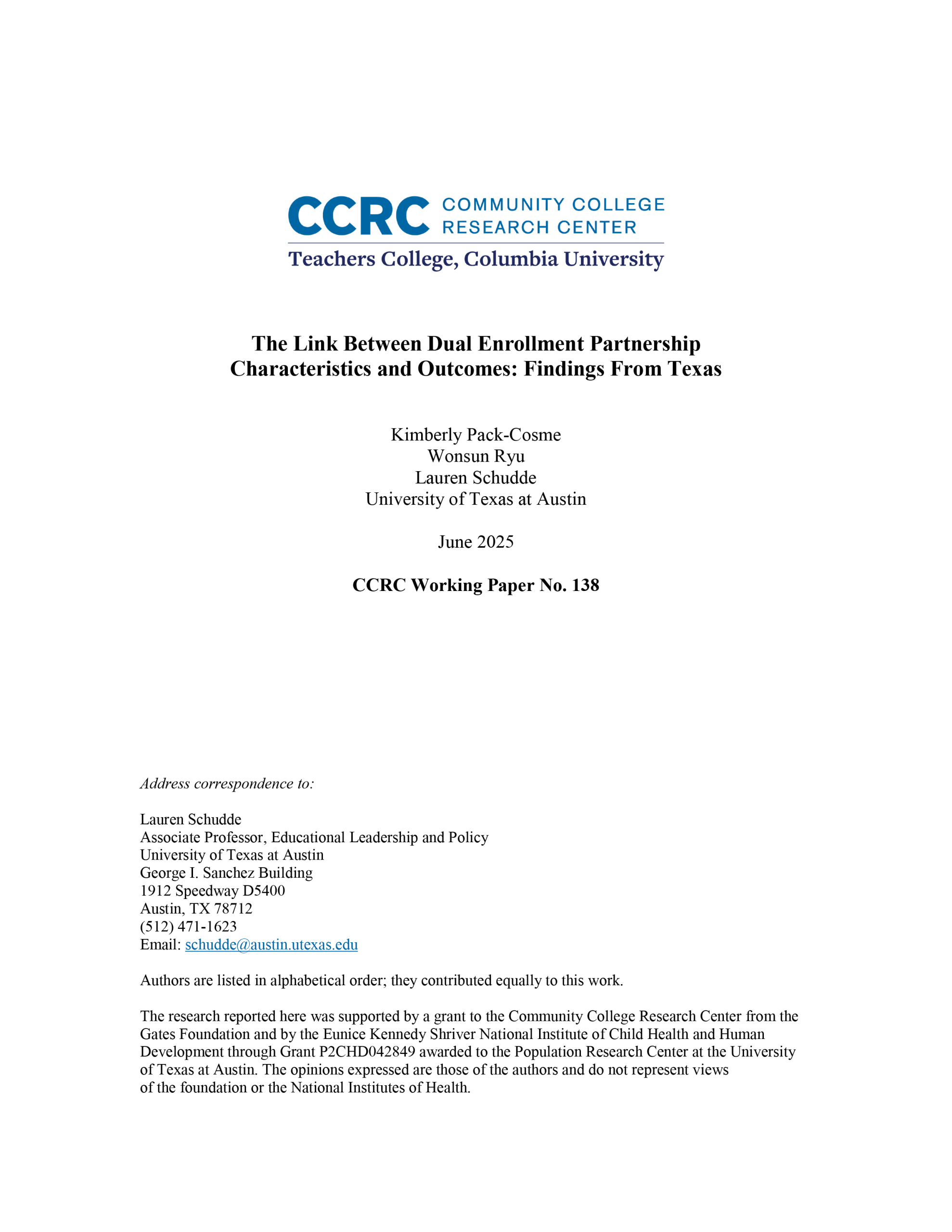
Although variation in dual enrollment (DE) high school–college partnership contexts likely contributes to differences in DE access, structures, and outcomes, the extent of variation across DE partnerships is unclear. To build an understanding of variation in key DE structures and outcomes across partnerships, this working paper examines DE partnerships between high schools and community colleges in Texas, where DE students account for one fifth of all community college enrollees. The authors use statewide administrative data from Texas to identify all DE course enrollments across three cohorts of high school students, constructing partnership-level measures and outcomes for each unique high school–college pairing. Through descriptive and regression analyses, they describe DE partnerships and estimate which DE structures and contexts predict aggregate DE course completion, college enrollment, and degree attainment. The paper illuminates considerable variation in DE course structures and student composition across partnerships. Regression results indicate that DE course structures (e.g., course subject, location, instructor type) are less practically meaningful in predicting a partnership’s aggregate outcomes compared with contextual measures such as geographic locale (i.e., rural or urban) or use of an early college high school model.
